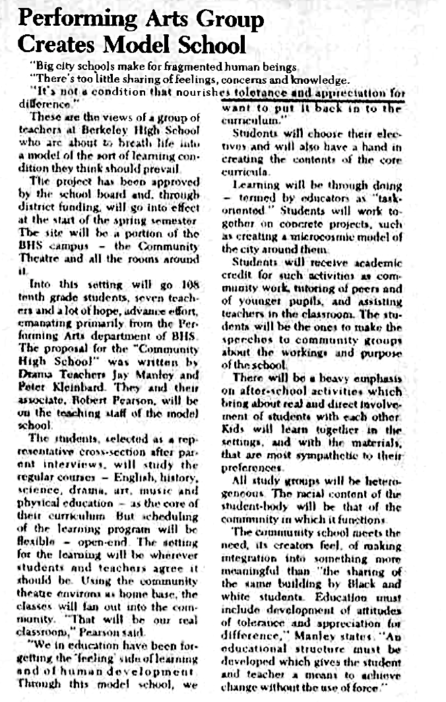The very first experimental school formed in the era of curricular experimentation at Berkeley was a “Community High,” brainstormed by drama teachers, that sought to bring students into concentrated engagement with the larger Berkeley community. According to the article, 108 tenth grade students and seven teachers were expected to “us[e] the community theatre environs as home base.” The curriculum was supposed to be project-oriented and geared toward reaching out beyond the customary walls of a school.
In 1969, the first year that Community High opened, student demand was quite intense. Six hundred of Berkeley High’s 1054 tenth graders applied for admission. (See the second volume of this independent report on Berkeley’s experimental schools for a more detailed history of Community High, later renamed Genesis.)
Note: though the headline describes this Community High as a “model school,” it is not to be confused with another offshoot within Berkeley High that was named “Model School A” and was aimed to be a counterweight to the “free schools” movement, with structured classroom environments targeted for highly disciplined learners.
***
The article comes from the BUD Berkeley Unified District, Publication of ESEA (The Elementary and Secondary Education Act of 1965); the ESEA was signed by President Lyndon B. Johnson to promote education opportunities, with a commitment towards the twin goals of equality and quality.
